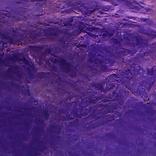
Beauty. Rarity. Durability. Discover the attributes that attract us to gemstones and what makes them precious. Below is a basic gemstone encyclopedia with some quick facts you should know about.
DIAMOND ANATOMY
While every diamond is unique, all diamonds share certain structural features. A diamond’s anatomy, or its basic structure, determines its proportions, brilliance, dispersion, and scintillation. Each part of the diamond has a specific name, and having a basic understanding of how each piece contributes to the diamond as a whole will help you find your perfect diamond. A diamond is comprised of eight primary components. They are Diameter, Table, Crown, Table Spread, Girdle, Pavilion, Depth, and Culet.
Below is a brief description of each part of a diamond and its location.
-
Diameter: The width of a polished stone, measured from edge to edge.
-
Table: The most significant polished facet located on the top of the diamond.
-
Crown: The top part of a diamond extending from the table to the girdle. The crown is made up of bezel facets (crown mains), star facets, upper girdle facets (upper halves), and a table facet.
-
Girdle: The very edge of the diamond where the crown and pavilion meet.
-
Pavilion: The bottom part of a diamond extending from the girdle down to the culet.
-
Depth: The total height of a diamond measured from the table to the culet.
-
Culet: The small or pointed facet at the very bottom of the diamond. Before purchasing a diamond, make sure that you have a basic understanding of a diamond’s anatomy. This will allow you to appreciate diamonds truly and all their intricacies, communicate with experts about a particular diamond, and, most importantly, it will assist you in making a well-thought-out decision about which diamond is best for you.

COLOR GEMSTONES
Discussing the anatomy of a colored gemstone is very similar to the discussion of a diamond. The parts of a gemstone are the same as a diamond. The crown is the upper part of a gemstone, just as the pavilion is the lower part. The carat weight is weighed the same. Color is a bit different. When discussing color we are looking for a consistent color throughout the gemstone. Some colored gemstones may have weaker colored tones on one side and stronger, more saturated tones elsewhere. A colored gemstone should have beautiful even color throughout the gemstone.




ALEXANDRITE
Alexandrite is a birthstone for June, along with pearl and moonstone. Alexandrite is also the gem for the 55th wedding anniversary.



AMBER
While amber isn’t a birthstone, it is associated with the astrological sign of Taurus.



AMETHYST
Amethyst is the birthstone for February and the gem for the 6th and 17th wedding anniversaries.



AMETRINE
Transparent, bicolored quartz with the colors of both amethyst and citrine in the same gem is called ametrine or amethyst-citrine.



AQUAMARINE
Aquamarine is the birthstone for March and the gem of the 19th wedding anniversary.



CITRINE
Along with topaz, citrine is a birthstone for November. It’s also recognized as the gem that commemorates the thirteenth anniversary.



DIAMOND
Diamond is recognized today as the birthstone for April. Diamond is also the gem that marks the 60th and 75th wedding anniversaries.



FANCY COLOR
Fancy color diamonds add a unique twist to your celebration.



EMERALD
As the gem of spring, emerald is the perfect choice as the birthstone for the month of May. It’s also the gem of the twentieth and thirty-fifth wedding anniversaries.



GARNET
Garnet is the birthstone for January and the gem for the second anniversary.



IOLITE
Iolite is the gemstone for the twenty-first wedding anniversary.



JADE
In China, a pierced jade disk is a symbol of heaven. Jade is the official gem for the 12th anniversary.



KUNZITE
Some consider kunzite to be an alternate birthstone for February.



LAPIS LAZULI
For thousands of years, lapis has been fashioned to show off its rich, dark color.



MOONSTONE
Moonstone is a birthstone for June, along with pearl and alexandrite.



MORGANITE
Strong color in morganite is rare, and gems usually have to be large to achieve the finest color.



OPAL
Opal’s microscopic arrays of stacked silica spheres diffract light into a blaze of flashing colors. Opal is an October birthstone.



PEARL
Pearl is the birthstone for June and the gem of the third and thirtieth anniversaries.



PERIDOT
Peridot is the birthstone for August and the 15th anniversary gemstone.



ROSE QUARTZ
Rose quartz has been recognized as the gem that commemorates the fifth wedding anniversary.



RUBY
Ruby is the birthstone for July and the gem for the 15th and 40th anniversaries.



SAPPHIRE
Sapphire is the birthstone for September and the gem of the 5th and 45th anniversaries.



SPINEL
Spinel was recently added as an August birthstone, sharing this month with peridot and sardonyx. It has long been mistaken for rubies.



SUNSTONE
Sunstone is a member of the feldspar group. Other feldspar group gems include moonstone



TANZANITE
Tanzanite is a birthstone for December, along with zircon, turquoise, and blue topaz. Tanzanite is also the gem for a 24th anniversary.



TOPAZ
Precious topaz is a birthstone for Novemberand blue topaz is a birthstone for December. Blue topaz is the gem of the 4th anniversary and Imperial topaz is the gem of the 23rd anniversary.



TOURMALINE
Tourmaline is a birthstone for October, along with opal. Tourmaline is also the gem of the eighth anniversary.



TURQUOISE
Turquoise is the traditional birthstone for the month of December and the gem of the 11th anniversary.



ZIRCON
Zircon is a birthstone for the month of December, along with turquoise and tanzanite.





